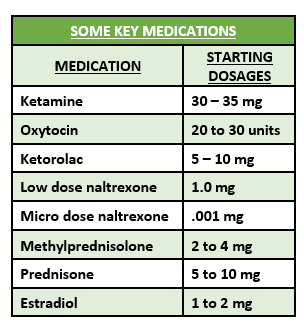The Way Forward: California’s New Opioid Guidelines
/By Dr. Forest Tennant and Kristen Ogden
The Medical Board of California recently published new guidelines for prescribing opioids and other controlled substances for pain, which emphasize “individualized care” that is customized for each patient.
The guidelines are a remarkable, positive and practical way forward in pain care. All persons concerned about chronic pain treatment with opioids, benzodiazepines and other controlled drugs need to know the basic concepts embedded in them.
As the medical board was updating its guidelines, we had great concern that they would bury California’s Pain Patient's Bill of Rights and Intractable Pain Treatment Act. When these laws were passed in the 1990’s, they were a godsend to patients with chronic intractable pain, who were given the right to “request or reject the use of any or all modalities in order to relieve his or her pain.”
That means patients, with the support of their doctors, could get opiate medication without first having to submit to surgery, medical devices and other forms of pain treatment.
To our great pleasure, the medical board’s new guidelines recognize, define and support these worthy laws. Importantly, the guidelines also state that they are “not in any way intended to limit treatment” of patients in hospice or palliative care. And they allow for doctors to prescribe high dose opioids, provided they keep good medical records that document a need for them.
Defining Intractable Pain
The California guidelines provide a classic definition of intractable pain as “a state in which the cause cannot be removed or otherwise treated and no relief or cure has been found after reasonable efforts.”
The problem with this definition is that intractable pain may be mild or intermittent and not curable, but may still be treated with non-opioid modalities. To require and receive treatment with opioids and other controlled drugs, one really needs a specific causative diagnosis of the unremitting “high impact” pain that produces physiologic complications such as hypertension, tachycardia, and endocrine deficiencies.
Put another way, is intractable pain an incurable but treatable problem? Or is it constant and incurable with potentially life-threatening complications?
Physicians, as a group, are often mystified, confused and unaware of how to determine which patients have an incurable, but readily treatable problem, and which patients have the constant and incurable pain that causes complications and require opioid therapy.
Physicians need help to make sound, defensible treatment decisions in the face of this quandary. Some patients with complex intractable pain are greatly impacted and require non-standard treatment, which may include high-dose opioids, benzodiazepines and stimulant drugs.
Here are the recommended criteria to identify such patients and support non-standard treatment plans.
A specific medical cause of intractable pain has been identified.
Constant pain has impacted some physiological and/or mental functions such as sleep, eating, hygiene, reading, concentration, and mobility.
Trials of standard medications and dosages with such agents as anti-depressants, muscle relaxants, anti-inflammatories, stimulants, anti-seizure medications, and low-dose opioids have not controlled pain or normalized functions.
There is objective physical evidence of the causative disease or complications of the pain, such as hypertension, tachycardia, neurologic deficits, or anatomic structural abnormalities.
There is an objective, diagnostic test result that documents an abnormality of the cause of pain or its complications, such as a magnetic resonance imaging (MRI), hormone deficiency, elevated autoimmune or inflammatory marker, or an abnormal electrodiagnostic test.
It is the lack of adequate treatment of complex intractable pain that is really the crux of the suffering and deaths that have emerged due to overzealous and misinformed opioid regulations and guidelines. These legitimate, complex patients comprise about 3 to 5% of chronic pain patients.
The California medical board’s new guidelines provide clinicians the opportunity to implement individualized and effective treatments for these unfortunate and deserving intractable pain patients.
Forest Tennant, MD, DrPH, is retired from clinical practice but continues his research on the treatment of intractable pain. Dr. Tennant was the lead physician in crafting California’s Intractable Pain Law and Pain Patient Bill of Rights, and worked with the legislature to get them passed.
Kristen Ogden is a patient advocate from Virginia. Kristen and her husband Louis travel regularly to California for his intractable pain treatment and prescriptions, which are not available in their home state. Kristen testified during public hearings on the California guidelines and closely followed their development.
The Tennant Foundation gives financial support to Pain News Network and sponsors PNN’s Patient Resources section.









